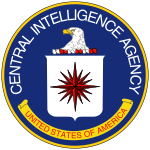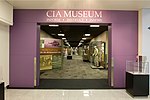Kryptos
1990 establishments in Virginia1990 sculpturesBuildings and structures in Fairfax County, VirginiaCentral Intelligence AgencyCopper sculptures in the United States ... and 9 more
Granite sculptures in VirginiaHistory of cryptographyMcLean, VirginiaOutdoor sculptures in VirginiaRiddlesSculptures by Jim SanbornStone sculptures in VirginiaUndeciphered historical codes and ciphersWooden sculptures in the United States

Kryptos is a sculpture by the American artist Jim Sanborn located on the grounds of the Central Intelligence Agency (CIA) headquarters, the George Bush Center for Intelligence in Langley, Virginia. Since its dedication on November 3, 1990, there has been much speculation about the meaning of the four encrypted messages it bears. Of these four messages, the first three have been solved, while the fourth message remains one of the most famous unsolved codes in the world. The sculpture continues to be of interest to cryptanalysts, both amateur and professional, who are attempting to decipher the fourth passage. The artist has so far given four clues to this passage.
Excerpt from the Wikipedia article Kryptos (License: CC BY-SA 3.0, Authors, Images).Kryptos
Savile Lane,
Geographical coordinates (GPS) Address Nearby Places Show on map
Geographical coordinates (GPS)
| Latitude | Longitude |
|---|---|
| N 38.95227 ° | E -77.14573 ° |
Address
New Headquarters Building
Savile Lane
22101
Virginia, United States
Open on Google Maps






